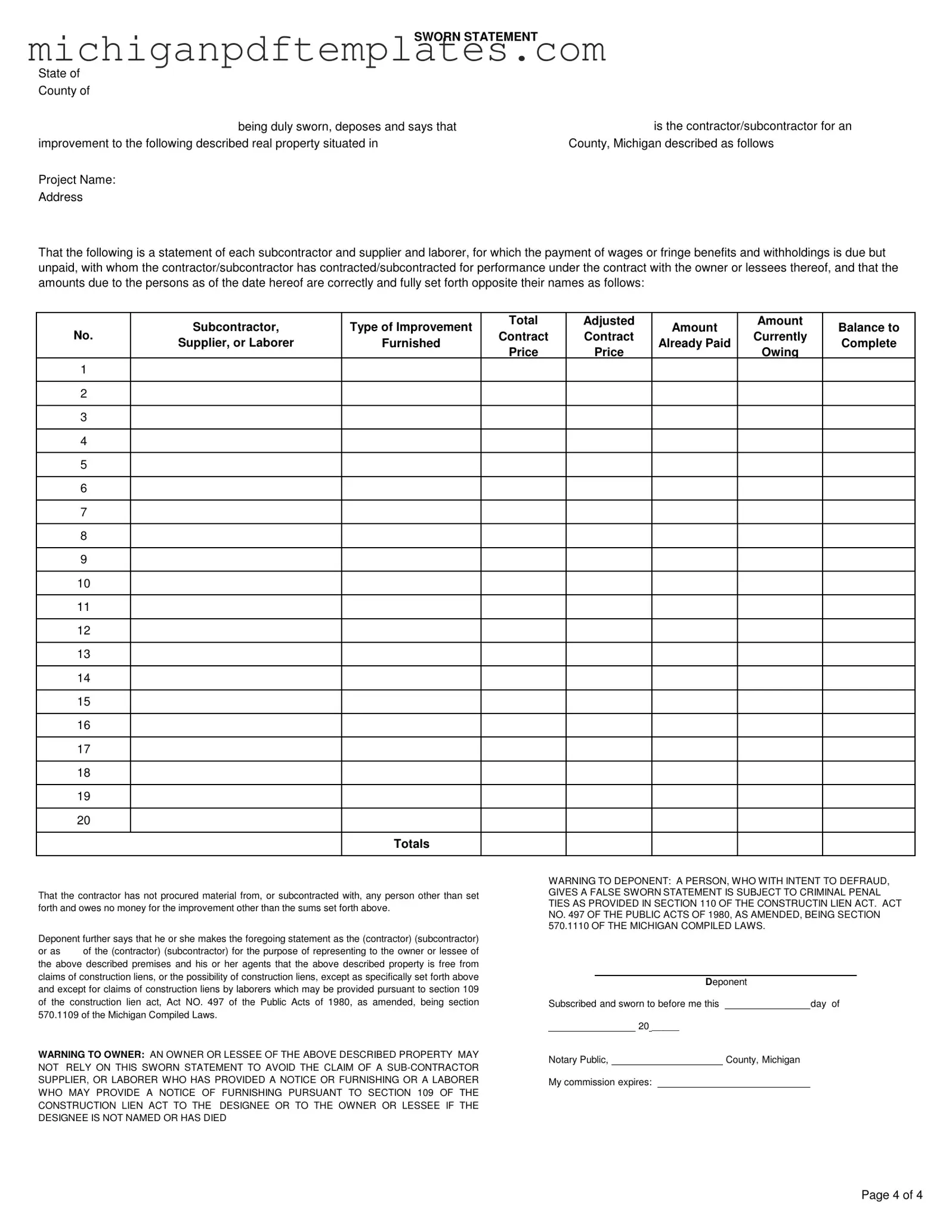The Michigan Sworn Form serves as a critical document in the construction industry, particularly for contractors and subcontractors involved in property improvements. This form requires the contractor or subcontractor to affirm their role in a specific project, detailing the real property involved, including its address and project name. A significant aspect of the form is the comprehensive list it provides, detailing each subcontractor, supplier, and laborer associated with the project. For each entry, the form outlines the total contract price, any amounts already paid, and the balance currently owing. This transparency is essential, as it ensures that all parties involved are aware of outstanding payments and obligations. Furthermore, the form asserts that the contractor has not engaged any additional subcontractors or suppliers beyond those listed, thus protecting the property owner from potential construction liens. It also serves as a declaration to the owner or lessee that the property is free from claims, except those specifically noted. Notably, the form includes warnings to both the owner and the deponent about the legal implications of providing false information, highlighting the importance of accuracy and honesty in these declarations. By requiring a notarization, the Michigan Sworn Form adds an extra layer of verification, ensuring that the statements made are legitimate and legally binding.
